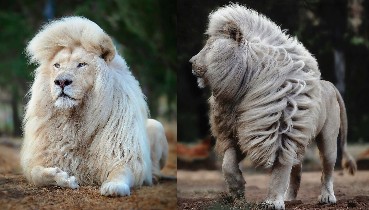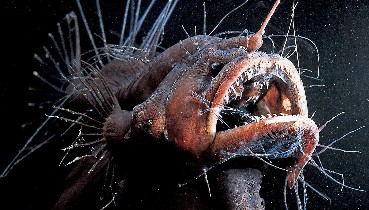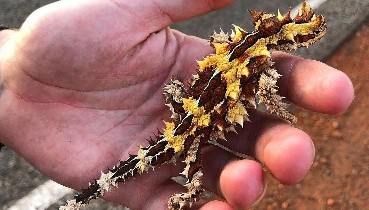What Is Moldavite Moldavite is a type of gemstone that originated from a meteorite impact, produced when terrestrial silica is fused in the intense heat and pressure created by the crash of large meteorites. Moldavite is a type of tektite, Tectites are members of a large group of impact glasses, formed by the collision of a meteorite on the Earth’s surface and the subsequent melting of surrounding rocks. The most famous tectites used as gemstones are moldavites from southern Bohemia in the Czech Republic. These were formed by a meteorite’s impact in the Ries crater in southern Germany 14.7 million years ago, about 500 km from their occurrence. Formation Moldavite is thought to have formed during the impact of a large meteorite or comet with the Earth's surface. The intense heat and pressure from the impact caused the local terrestrial rocks, including silica-rich rocks, to melt and splash into the surrounding area. The Nördlinger Ries crater is a large impact crater about 15 kilometers in diameter. It was formed by the impact of a large meteorite about 15 million years ago. The impact was so powerful that it melted the surrounding silica sand and rock, creating a molten glass that was then flung into the atmosphere. As the molten glass cooled, it hardened into tektites, including moldavite.

Where is Moldavite Found The primary source of Moldavite is the Bohemian Forest region southern Germany/Czech Republic region, where the impact event occurred. Smaller quantities of Moldavite have also been found in other parts of Europe. Moldavite Properties Composition: Primarily silica glass (SiO₂) with minor amounts of aluminum oxide (Al₂O₃) and other trace elements like magnesium (Mg), iron (Fe), and calcium (Ca). Color: Moss green is the most common color, but it can also range from yellowish-green to brown and even black. The color variations are caused by the presence of different impurities and the oxidation state of iron. Luster: Vitreous to greasy, meaning it has a glassy to oily shine. Crystal System: Amorphous, meaning it lacks a definite crystal structure. Streak: White to yellowish-white. Hardness: Mohs hardness of 5.5 to 7, which means it can be scratched by steel or hard glass but not by a fingernail. Cleavage: None. Crystal Form: Does not form true crystals due to its amorphous nature. Instead, it occurs as irregular masses, nodules, and blobs. Density: 6.6 to 7.2 g/cm3, making it denser than most glass. Transparency: Can range from transparent to translucent to opaque. Transparent moldavite is quite rare and valuable. Fracture: Conchoidal, meaning it breaks with smooth, curved surfaces like broken glass. Specific Gravity: 6.6 to 7.2, which is consistent with its density. Solubility: Slightly soluble in hydrochloric acid and nitric acid. Magnetism: Non-magnetic. Fluorescence: Can exhibit a weak yellow, orange, or red fluorescence under ultraviolet light. Pleochroism: Absent due to its amorphous nature. Refractive Index: 1.54 to 1.59, which is higher than most glass. Inclusions: Often contains gas bubbles, schlieren (flow lines), and tiny crystals of other minerals like magnetite and zircon. These inclusions can contribute to the unique appearance of moldavite. Fake Moldavite As true genuine Moldavite is getting more rare and the price is going up, the counterfeiters are getting better at their craft. The identification of moldavite with a natural-looking surface is much more difficult. Moldavites are popular for their pleasant green color, enigmatic origin, and interesting etched texture. They are used in jewelry, in either faceted or natural form. The price of moldavite has risen in the last few years, and as a logical consequence imitations have become more widespread. As Moldavite's Value Grows, So Does the Market for Fakes How to Spot Fake Moldavite. R

As true genuine Moldavite is getting more rare and the price is going up, the counterfeiters are getting better at their craft. The identification of moldavite with a natural-looking surface is much more difficult. The identification of faceted moldavite is simple. Besides their flow texture and abundant bubbles (almost always much more abundant than in an artificial glass), moldavites contain “wires” of lechatelierite, a high-temperature form of SiO₂. Lechatelierite is very easy to see with a loupe due to its lower RI. Tips to look for in fake stones If these all appear to be the same shape or resemble the pictures on this page If they appear Shiny / Wet looking Faceted stones do not have bubbles, or inclusions, it appears flawless or clean like glass Some counterfeiters are even now creating a mold from an actual genuine piece of Moldavite and replicating the color and texture to almost close to perfection. The best way to catch this is by noticing the stone is flawless and the price asked, which is a very low price usually.

If the Moldavite you are examining is bright vibrant green in color, you are most likely looking at a fake Moldavite that was produced by melting green glass bottles. Also, be aware that the larger the Moldavite, the higher the price, as most genuine Moldavite is sold by the gram. If the seller claims the stone was mined anywhere but the Moldau River valley in the Czech Republic, it is most definitively a fake. If the Moldavite looks really wet or shiny, like melted glass, you are more than likely looking at a fake Moldavite. Now, there are some sellers that state up front that their Moldavite is lab-created, created or synthetic, which is just green glass made and formed to look like Moldavite. Just be aware that if it states lab-created, created or synthetic, you are getting green glass or maybe worse. Some fake Moldavite on the market isn't even green, which is a true sign that it is definitely fake. Below I will include some pictures of real and fake Moldavite so that you may see the difference for yourself. Moldavite Uses Moldavite, with its unique origin and properties, is valued for various uses, including aesthetic, spiritual, and metaphysical purposes. Here are some common uses of moldavite: Jewelry: Moldavite is highly valued in the jewelry industry for its unique origin, striking green color, and metaphysical associations. It is often used in making pendants, earrings, rings, and other pieces of jewelry. Moldavite jewelry is sought after by collectors and individuals drawn to its distinctive appearance. Metaphysical and Spiritual Practices: Many people believe that moldavite possesses powerful metaphysical properties and is associated with transformation, spiritual growth, and healing. It is often used in meditation, energy work, and spiritual rituals to enhance awareness, intuition, and connection with higher realms. Some individuals wear moldavite jewelry or carry moldavite stones to benefit from its purported energetic qualities. Healing and Well-being: In alternative healing practices, moldavite is believed to have a beneficial effect on physical, emotional, and spiritual well-being. It is thought to clear energy blockages, release negative patterns, and facilitate personal growth and transformation. Some people use moldavite in crystal healing layouts or place it in their living or working spaces to promote harmony and balance. Collecting and Investment: Moldavite is highly prized by mineral collectors and enthusiasts for its rarity, unique origin, and aesthetic appeal. Collectors may acquire moldavite specimens for display or as part of their mineral collections. Due to its limited availability and increasing demand, moldavite is also considered an investment by some individuals who anticipate its future appreciation in value. Aesthetic and Decorative Purposes: Moldavite's distinctive green color and unique texture make it visually striking and aesthetically appealing. Some people use moldavite specimens as decorative objects in their homes, offices, or sacred spaces. Moldavite's natural beauty adds a touch of elegance and uniqueness to interior décor arrangements. Is moldavite rare Yes, moldavite is a relatively rare gemstone. It is found in a limited area in southern Germany, and it is estimated that only a few hundred tons of moldavite were formed during the impact that created the Nördlinger Ries crater.





 Meet the jacanas, a family of wading birds that are spread across Asia, Africa, South and Central America, and Australia.1222 views
Meet the jacanas, a family of wading birds that are spread across Asia, Africa, South and Central America, and Australia.1222 views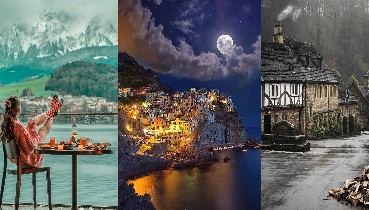 The 51 Most Beautiful Places in the World3844 views
The 51 Most Beautiful Places in the World3844 views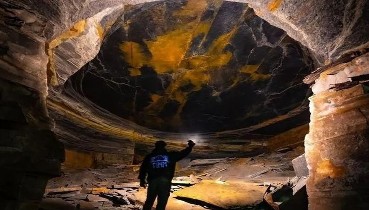 The secret cave half an hour's drive from Liverpool59 views
The secret cave half an hour's drive from Liverpool59 views Meet 8 of the world’s most remote tribes1133 views
Meet 8 of the world’s most remote tribes1133 views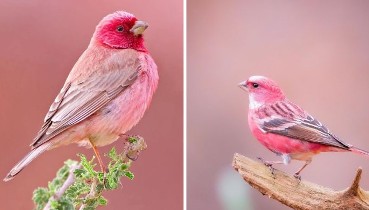 Pink Rosefinches: Beautiful Bird With A Beautiful Colour68 views
Pink Rosefinches: Beautiful Bird With A Beautiful Colour68 views 20 Nature Photographs That Document Rare Moments...89 views
20 Nature Photographs That Document Rare Moments...89 views 30 Most Beautiful Black Women in the World17308 views
30 Most Beautiful Black Women in the World17308 views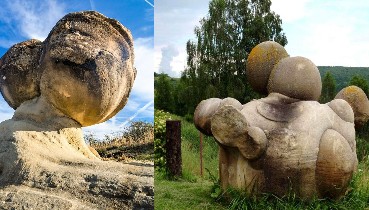 These Mysterious Stones Found in Romania Grow, Move and Even Breed858 views
These Mysterious Stones Found in Romania Grow, Move and Even Breed858 views
